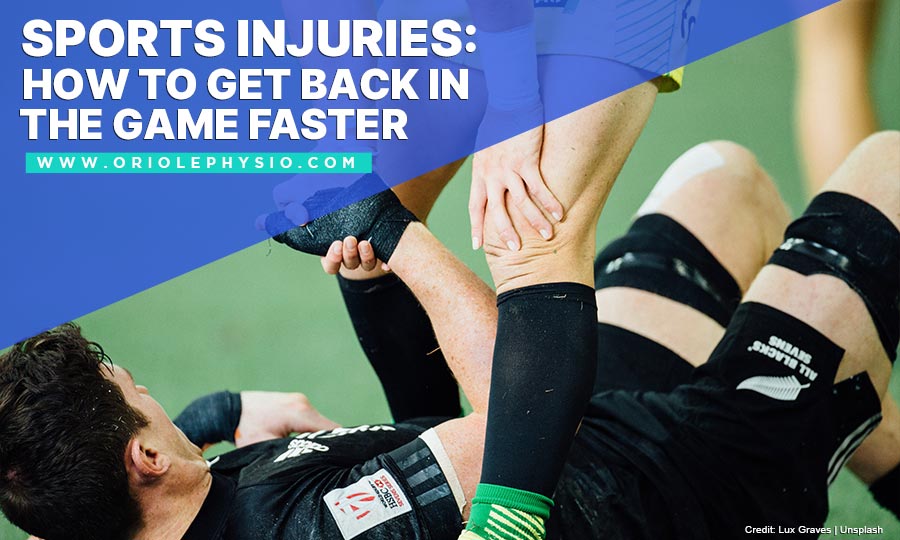Sports Injuries: How to Get Back in the Game Faster
Sports injuries are an occupational hazard for a great many athletes. No matter how safely you exercise, it’s likely that you’ll experience a sports injury at some point in your career. The trick is knowing what to do when they happen and how to take care of yourself afterward. Proper care is a must to ensure you recover quickly and get yourself back in the game safely.
How to Speed Up Your Recovery
Most athletes want to get back to their daily routine as soon as possible after a sports injury. The secret to successful sports injury recovery and a quick return to playing is getting early treatment and having a proper strategy to direct your recovery. Keep these steps in mind to make recovery a much smoother process in case of any sporting injuries.
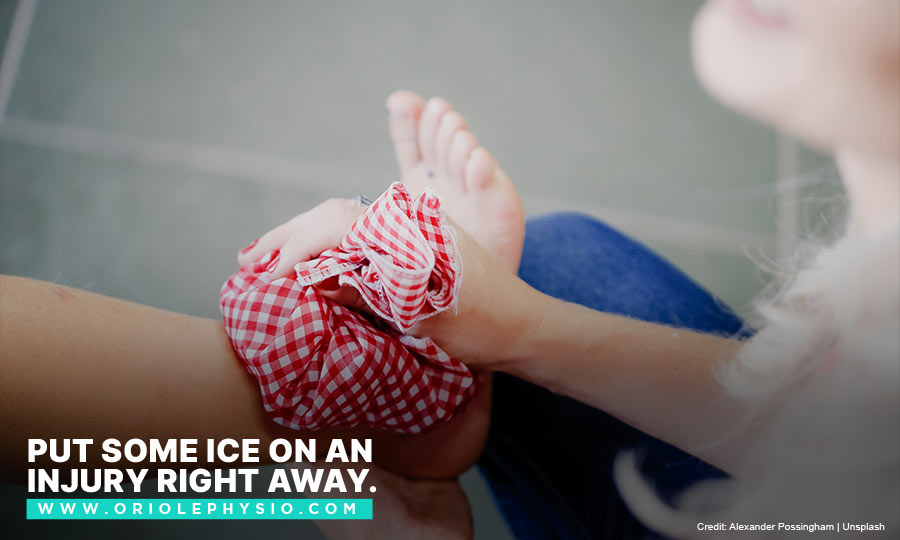
- Remember RICE
One widespread sports injury treatment is the RICE method. RICE stands for Rest, Ice, Compression, and Elevation. Those basic steps will prove useful in the immediate aftermath of an injury. The aim of RICE is to control an injury’s initial inflammation and jumpstart the healing process early.
After sustaining an injury, immediately stop and take a break for at least 48 hours. The rest helps you avoid further damage to the affected area. Avoid putting weight on the injury as you rest to prevent further aggravation.
During those crucial 2 days, apply an ice pack covered by a light, absorbent towel to the area to reduce pain and swelling. Apply the pack every 2 or 3 hours for 15 to 20 minutes each session.
In the initial 48 hours, keep the area compressed with an elastic medical bandage to keep the swelling under control. Wrap the area tightly, but still loose enough to avoid interrupting proper blood flow. You’ll know if it’s too tight if the area starts to feel numb or tingly.
Finally, it’s crucial you keep the affected area elevated to drain fluid away from the injury, reducing the pain and swelling. As a rule of thumb, elevate the area above or around the level of your heart. Use pillows to raise the area and get sufficient elevation.
![[CAPTION]: Get a checkup immediately to see if there’s anything wrong.](https://oriolephysio.com/wp-content/uploads/2021/09/Get-a-checkup-immediately-to-see-if-theres-anything-wrong.jpg)
- Get Immediate Treatment
The first step on the road to recovery is getting adequate treatment. The RICE method works fine on more minor injuries, but more serious injuries will need professional help.
The first 72 hours are often critical for injuries, so be sure to get your injuries looked at right away. Many athletes make the mistake of trying to tough it out. The more prudent thing to do would be to get an injury looked at. Think of it as a way to speed your recovery and get back to your normal routine as soon as possible.
A thorough clinical examination can help doctors identify the nature of your injury and offer guidance on what to do about it. If need be, imaging tests (like x-rays) can confirm the diagnosis and focus your sports injury rehabilitation strategy. The more information you can get concerning your injury, the easier it is to find solutions to help you recover faster and minimize complications. More preparation can also help with the mental side of recovery and help you get some peace of mind while you rest.
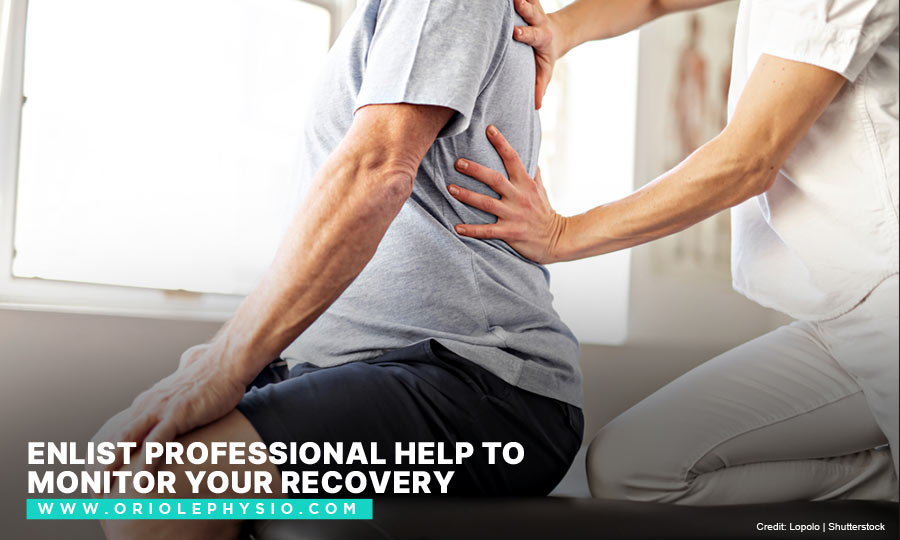
- Recover Under Supervision
After the pain and swelling have subsided, it’s easy to think you’re over the worst of it. However, you may not have fully recovered yet. Look into getting physical therapy after an injury to ensure you’ve made a full recovery.
Undergoing physical therapy is a great way to get some guidance from trained professionals in a controlled environment. Under their supervision, you can use basic exercises to restore your strength and regain your full range of motion. Other treatments can also help relieve lingering pain and strengthen your muscles in preparation for your return to exercising. Sports injury massage therapy is one example of effective treatment. Massage therapy can go a long way to dealing with lingering pain and restoring your range of motion, to name a few benefits.
Muscle loss typically accompanies extensive rest, even in uninjured areas of the body. Strengthening your muscles also includes resistance exercises to improve balance, reflex control, and endurance across the entire body. Together with endurance training and conditioning, your exercises can do much to jumpstart your return to your regular routine.
As a rule of thumb, match each day of inactivity with 2 days of rehab to start rebuilding your strength. Gentle range-of-motion exercises are a good place to start, then you can switch to weight-bearing activities when you’ve gotten some strength back. Once you’ve gotten more comfortable exercising again, you can start building up your tissues with callisthenics, light weights, and resistance exercises. With a little effort, you can make yourself stronger than you were before the injury. The more fit you are, the more you reduce the risk of future injury.
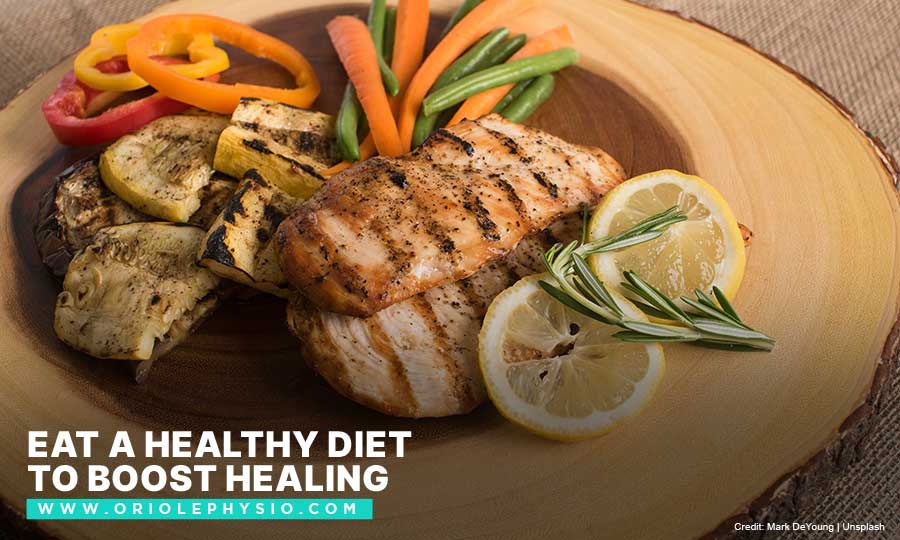
- Eat the Right Foods
Sometimes, the right foods can offer a boost to healing. A proper diet can help streamline the process, minimize recovery time, and help you get back on your feet sooner.
Protein-rich foods like chicken, fish, and occasionally beef are typical go-to foods for recovery. The protein in those foods helps the body retain muscle mass that might otherwise be lost as you recuperate. Protein also helps improve muscle development once you start retraining, so you can also give yourself a bit of a headstart before you restart.
Other foods that can help recovery include foods rich in vitamin C and omega-3 fatty acids. These nutrients help keep down inflammation, helping you deal with the pain more easily. Vitamin C-rich foods also improve the body’s ability to maintain bones, muscles, and tendons, which can give a slight boost to healing. For vitamin C, eat more citrus fruits, bell peppers, spinach, and tomatoes. Meanwhile, you’ll find omega-3 fatty acids in fish, walnuts, and plant oils. Many of these foods are healthy, so consider keeping up your healthy diet even after you’ve recovered.
![[CAPTION]: Get plenty of rest to help the body heal](https://oriolephysio.com/wp-content/uploads/2021/09/Get-plenty-of-rest-to-help-the-body-heal.jpg)
- Give Yourself Enough Time to Rest
The trick to faster recovery is giving the injured area plenty of time to rest. Injuries struggle to heal if they’re constantly used during recovery. Take enough time off to give those areas sufficient time to get better. Pain is a good indicator of an injury, so take care to report any aches and pains to your doctor so you can address them appropriately.
Take note that pain isn’t the only indicator of an injury. A common mistake many athletes make is getting back to their daily workout routine when the pain and swelling subside. However, just because the pain is gone doesn’t mean you’ve recovered and your muscles are back to full strength. Check with your doctor regularly to monitor your injury and ensure you return to exercising only after you’ve fully recovered.
One must-have for a full recovery is getting plenty of sleep. The body does much of its recuperation while you’re asleep. Giving yourself at least 8 hours of rest a night gives the body enough time to rest and heal. Adequate sleep also allows the body to release more hormones to boost the healing process. As you recover, sneak in some more time to sleep through the day. Getting a little extra sleep helps the body distribute even more resources to repair itself each day.
Additional Tips to Protect Yourself
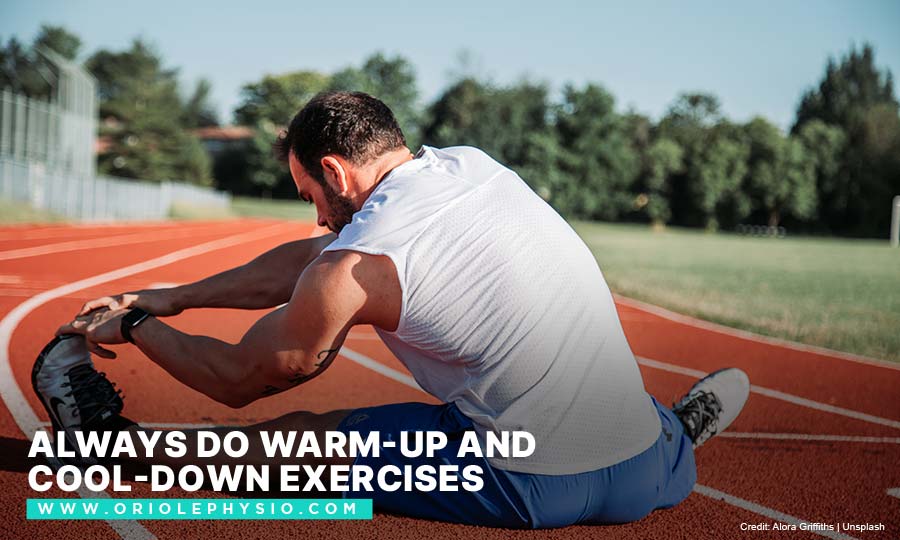
One thing to keep in mind is that the right preparations go a long way toward preventing sports injuries. Warm-up and cool-down exercises are an excellent way to prepare the body before and after working out, and play a major role in minimizing the likelihood of injury. Stretching the soft tissues before activity makes them limber and flexible in preparation for exercise. Some other steps you can take include:
- Easing yourself gradually into a harder workout as you go, and pacing yourself throughout.
- Stretching yourself regularly as part of your workout routine. Exercise makes the muscles strong, but also makes them tight and short. Stretching preserves flexibility and reduces the risk of injury.
- Having a comprehensive fitness plan that incorporates cardiovascular exercise, strength training, and flexibility.
- Exercising different muscle groups each session or exercising every other day.
- Using the appropriate gear and shoes for each sport. Supportive, well-fitting shoes are a must for weight-bearing activities and maintaining proper posture.
- Using proper technique. Having a partner or coach to work with you helps improve your mechanics and performance for increased safety as you work out.
- Getting adequate rest when tired to avoid straining the body.
![[CAPTION]: Visit Oriole Physiotherapy & Rehabilitation Centre for reliable care](https://oriolephysio.com/wp-content/uploads/2021/09/Visit-Oriole-Physiotherapy-Rehabilitation-Centre-for-reliable-care.jpg)
It often pays to get a helping hand with the recovery process. Oriole Physiotherapy & Rehabilitation Centre offers patient-oriented care to help you get back on your feet. Our team of therapists is trained and certified to offer the solutions you need for successful sports injury therapy in North York and monitor your condition on the road to recovery.
Call us now at (416) 221-0772 to make an appointment or fill out our contact form to send us your message.

